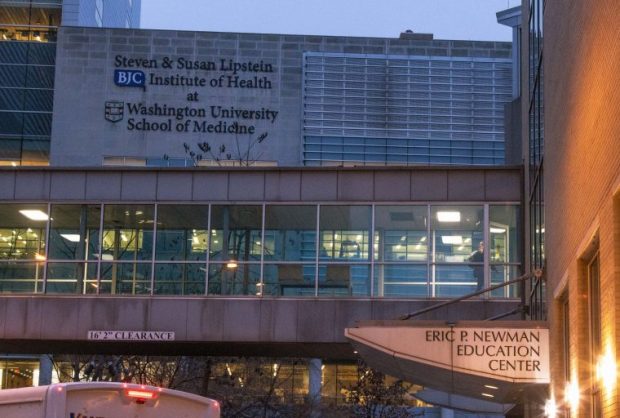News
WU expands testing access for students to include walk-in COVID tests out of Mudd Field tent
Walk-in COVID testing is now available for all students at the Mudd Field testing tent as of Monday, March 22.
The facility, based out of the tent that currently conducts surveillance tests, is open 8 a.m. to 3:40 p.m. Monday through Thursday and 8 a.m. to 11:40 a.m. on Fridays. Washington University has the capacity to administer 250 walk-in tests per week through the facility.
Walk-in testing is available to both undergraduate and graduate students, but not faculty or staff, who can either pay $50 to schedule a test at the 1234 Kingshighway Blvd. facility or get tested for free at Umrath Lounge if they have developed COVID symptoms.
Executive Director of Habif Health and Wellness Center Dr. Cheri LeBlanc explained that the decision to offer walk-in testing stemmed from the rising number of cases on campus, the growing number of students choosing to use outside testing and students failing to report symptoms to contact tracers.
“The troubling pattern in the last few weeks of less cooperation with our contact tracers made me concerned we were not identifying everyone who needed to quarantine,” LeBlanc wrote in a statement to Student Life. “This led the CMT [COVID monitoring team] to consider an open access model in addition to our mandated surveillance testing in the hopes that those who we were not identifying through contact tracing would avail themselves to increased testing.”
 Curran Neenan | Student Life
Curran Neenan | Student Life Outside the Mudd Field testing tent on Monday afternoon, students expressed support for the new program. They said the walk-in testing would help limit uncertainty for students who thought they were exposed to COVID-19 but did not have a scheduled surveillance testing appointment.
“I think it’s great,” junior Nicole Lew said after finishing a test at the tent. “I think it helps people who feel stressed that they have been exposed to COVID.”
Others agreed, noting that an earlier implementation of this system would have been even more beneficial to students.
“Any time a student feels at risk, they should have the opportunity to know whether or not they are positive or negative,” sophomore Ruben Wagner said. “I thought that that’s something we should have been doing since the beginning of the school year, so I’m glad they were finally able to get that instituted for the students.”
“I live off campus, so I schedule [an appointment] every other week, but for example a couple weeks ago, I felt like I got sick,” junior Catherine Chun said. “If the [new testing] system was in place before then, I could have [gotten tested] before waiting one more week before my designated week to test.”
Although the University has been selectively administering COVID tests to community members since the fall semester, this is the first opportunity for any student with a concern about COVID exposure to get tested at their own discretion by the University at no cost. However, LeBlanc encouraged students to be responsible when taking advantage of this new program, and not to treat a negative test as a license to behave recklessly.
“The test is only telling you at that moment you did not have COVID,” LeBlanc wrote. “You could be exposed soon after the test, so please do not rely on testing as a way to ensure safety and take that as permission to gather without masks. We have seen multiple instances where relying just on testing to endorse safety has not been effective and large outbreaks and superspreader events have occurred despite very frequent testing.”
Senior Erin Noh, who got tested at the tent Monday afternoon, said that an important element of the new program was its capability to reduce uncertainty and anxiety around COVID by putting students at ease with a test result.
“You never know what’s going to happen,” Noh said. “If people feel like they’ve been exposed within the two weeks that they’re supposed to get their testing, I think it’s good that they have the chance to come in whenever and get that confirmation that they’re not positive, or that they’re positive. I think it’s a good thing that they’ve added [the walk-in testing program].”
Additional reporting by Matthew Friedman
